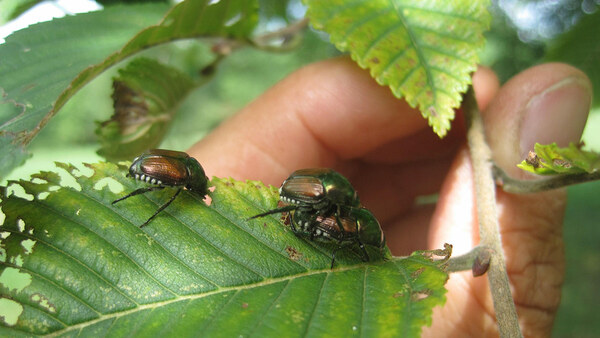
Selecting a cover crop should be a thoughtful process that takes into account the end (how you’ll get rid of it) before you even plant the seeds. Yes, you want to select a certain type of cover crop to address your specific soil problem. But the last thing gardeners need is to plant a crop that becomes a weed they can’t get rid of. Here are a few of the options for ensuring a proper end.

Mowing
Timing is key when mowing to control cover crops. If a vigorous crop like buckwheat (Fagopyrum esculentum) is allowed to fully mature, it will likely reseed in areas where you may not want it to, so it’s important to mow it down before that happens. We use our lawn mower at the lowest setting to run over the garden bed after the top growth of most crops has begun in spring but before the crops have matured enough to set seed. One mowing is sometimes not enough to kill the cover crop; you may need to do it two or three times.
“Cut and drop” is a phrase that farmers use to describe cutting the top growth with a scythe or shears and leaving the debris to decompose in the field; it is a different type of “mowing.” Burying the green matter in the soil with tilling is a way to speed the decomposition process after mowing. Smothering is useful for breaking down larger clumps of the cover crops, turning them into the type of crumbly fertile debris that will feed the garden.

Tilling
Tilling has earned—at least partially, if not entirely—a deservedly bad reputation. The use of heavy equipment to overtill provides a brief, fleeting benefit. The compaction of the soil that is caused by driving back and forth over it is bad. Excess tillage destroys the soil structure and can harm beneficial organisms and bacteria beneath the surface. But when done lightly and timed correctly, tilling is sometimes OK.
Minimal tillage of cover crops leads to the healthiest soil. This involves using a broad fork and a couple of different rakes to incorporate the cover crop debris into the soil while also aerating it. Unlike with deep tillage, your aim should be for minimal disruption. Moving backward through a row, push down the broad fork (a wide fork between two wooden handles, pictured) into the soil no deeper than 8 inches. Pull back the handles just enough to slightly lift the soil clumps. Lift the fork and insert it again, 6 inches behind the last placement. An easy rocking motion keeps the work light. If a cover crop was mown and the clippings left on the surface are significant, broad forking helps incorporate the organic matter into the bed quickly.
Smothering

Coated tarps spread over beds do the trick of beginning the decomposition process, once the cover crop has been either mown or cut and dropped. Try sod pins to hold down the edges of the cloth so that light and water infiltration is minimized. You should only leave the tarps in place for as long as it takes for the plant material beneath it to begin decomposing—sometimes a few days, often a couple weeks.

Winter-kill
Cover crops that do not overwinter are the easiest to deal with. Annual ryegrass, oats, and buckwheat often do not overwinter and can be incorporated effortlessly into the soil in spring. Oilseed radish and field peas also die after being exposed to cold temperatures. Growing winter-kill cover crops is best if you plan on planting longer-term crops in early spring, because they basically die and decompose on their own— quickly. The bed will be easy to prepare because the plants will be well on their way to decomposition when March rolls around. You may choose to do some light tilling-in of the decomposed matter as well.
More on cover crops
How to Use Cover Crops to Improve Soil
Lisa Hilgenberg is the head horticulturist of the Regenstein Fruit and Vegetable Garden at the Chicago Botanic Garden.

















Comments
Log in or create an account to post a comment.
Sign up Log in